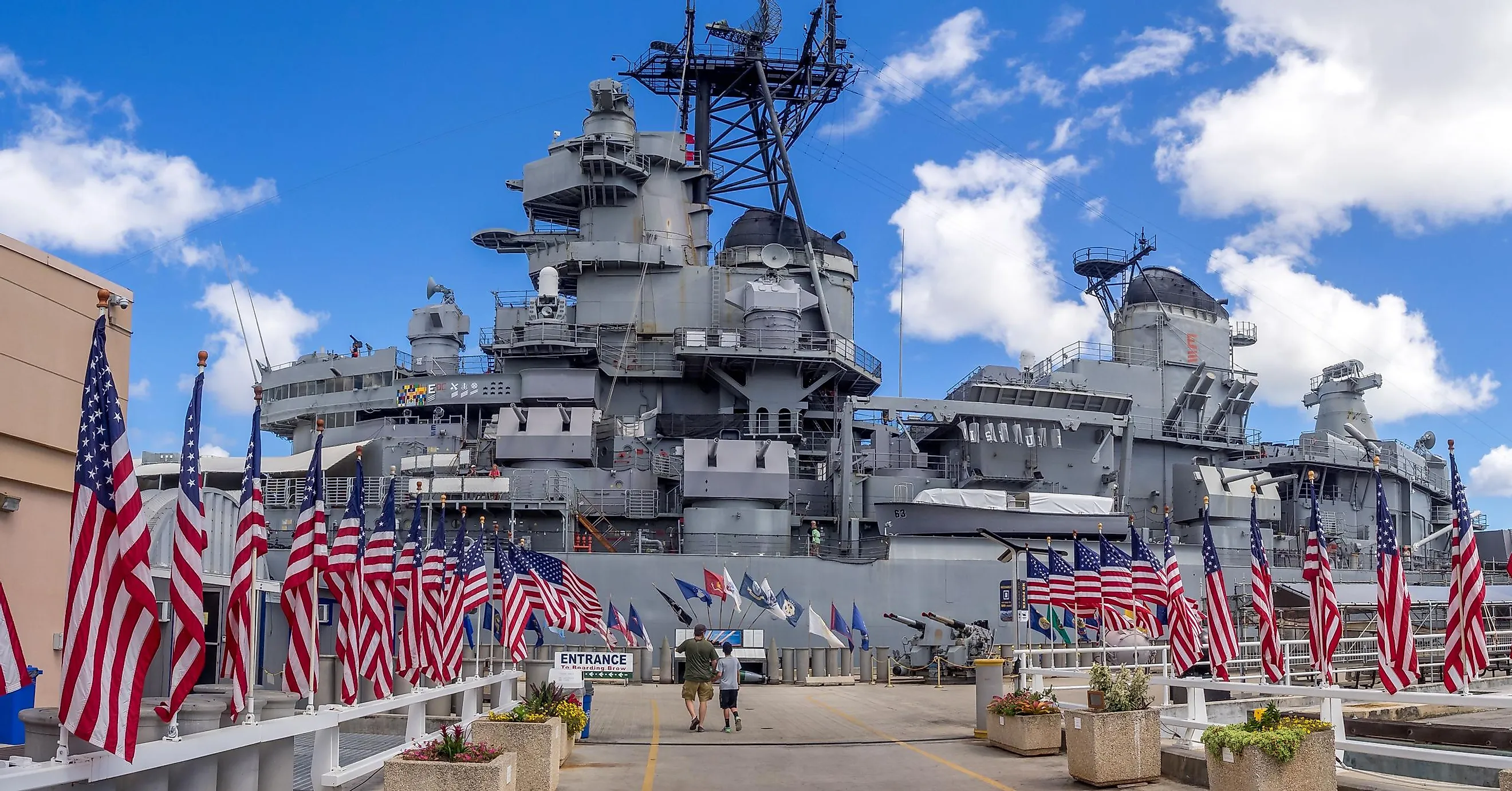
The Pearl Harbor Attack
On December 7th of 1941, a scene of carnage and bloodshed took place on the tranquil island of O’ahu. Located in Hawaii, the U.S. Pearl Harbor naval base was descended upon by Japanese aircraft, who were intent on causing as much devastation as possible. Fears over available resources encouraged the Japanese Empire to strategically attempt the seizure of lands occupied by United States allies. These tensions prompted the Pearl Harbor disaster that forever changed the outcome of WWII, by dragging in the unstoppable and unconquerable war machine that is the United States.
History of Tensions
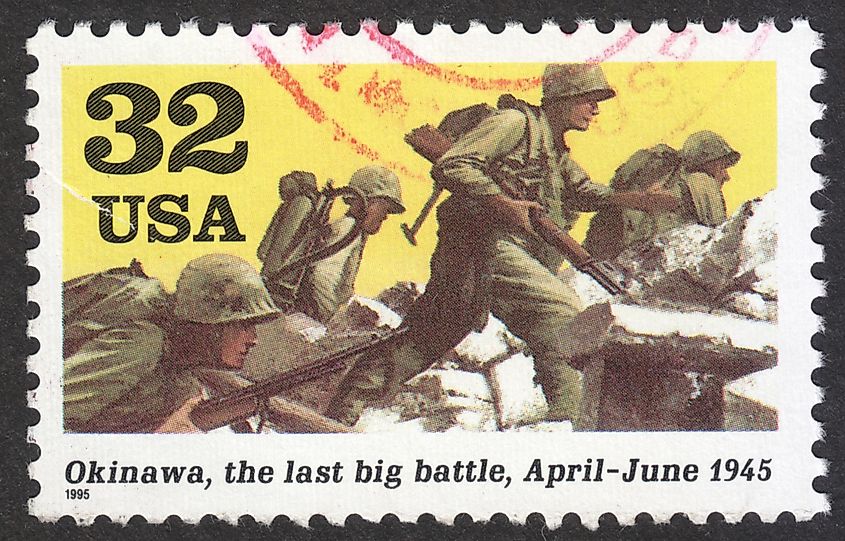
Entering a nation into war is a delicate decision, and the United States did not join the WWII fray eagerly. Twenty years earlier, WWI had effectively dampened any remaining romantic conceptualizations of war. Congresswoman Edith Nourse Rogers famously stated, “[…] we have neither the time or inclination to meddle in the affairs of others.” Despite British and European pleas for support, President Roosevelt’s administration was limited to sending support through material means, alongside pressuring Japan and Germany. Those pressures included funding Chinese resistance to the Japanese invasion, halting shipments of military supplies to Japan, and demanding a cessation of military activity in Southeast Asia. The American public’s support for intervention was growing by 1941, after news of the USS Panay incident, the Nanking massacre, and the Allison incident made its way into American media. Armed with the knowledge that a limited window existed to gain the upper hand on U.S. deployment, Japanese aircraft carriers set Pearl Harbor in their sights and mobilized on November 26th, 1941.
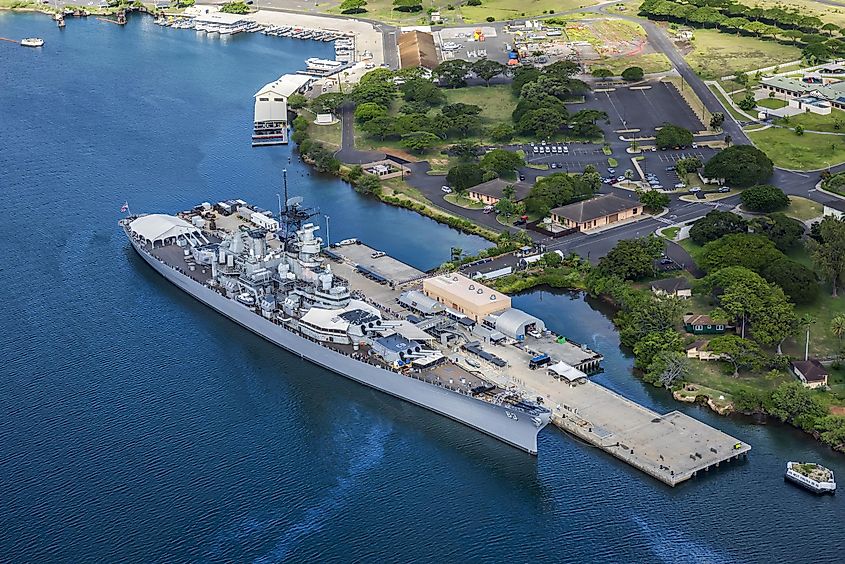
A key factor in Japan’s military aggression was the need for oil (as well as steel and copper). After all, a desire to establish an empire capable of competing with contemporary superpowers cannot be fueled by wood and steam. Only 6 percent of Japanese oil-use was produced domestically, and with the cost of maintaining a front in China, the United States freeze on the Japanese oil exchange could be a death knell. Therefore, the British and Dutch occupied territories of southeastern Asia, areas known to be rich in essential resources, became a desirable target. Another option was available; ignore America and her allies entirely and send the Japanese army into Serbia and begin a land war with Russia, to extract those same assets. As Russia had proven itself an insurmountable foe in 1939, and the Japanese Navy possessed greater momentum, the choice was clear: Western powers had to be engaged head-on.
The Attack
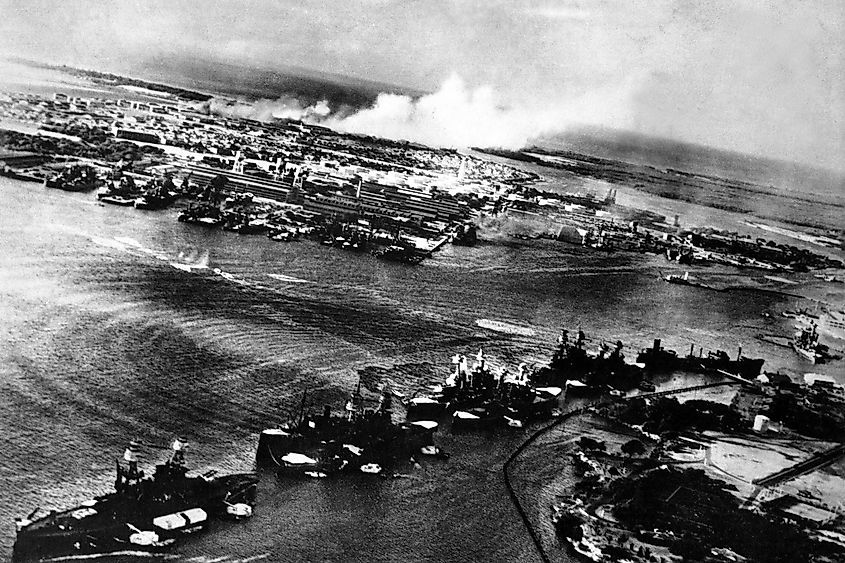
The goal of the ambush was simple: kneecap American military capacity in the Pacific while simultaneously discouraging the American people from becoming further involved in the unfolding global war. Pearl Harbor was the first step in enabling Japan to seize and fortify islands across the Pacific, setting the stage for a war of heavy casualties that eventually would convince American citizens and leadership to halt their intervention of the Japanese Empire’s expansion; a total conquest of the United States was never the goal.
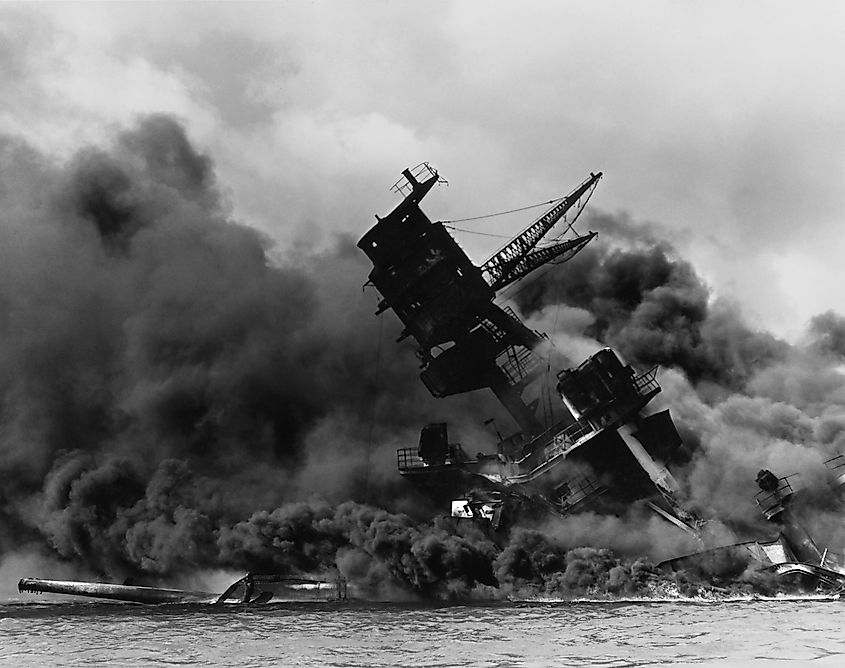
For such a significant event, the attack on Pearl Harbor lasted only an hour and 15 minutes. In the early morning of December 7th, weather readings displayed a temperate 73 °F forecast amidst high visibility conditions. At 7:02 in the morning, a report was given to U.S. Lieutenant Tyler, revealing a large formation of aircraft in the area. His inexperience led him to ignore and dismiss the data. Less than an hour later, the first wave of 183 Japanese bombers and fighters filled the skies above Pearl Harbor. Clear skies provided pilots with an ideal line of sight to bombard US battleships with armor-piercing explosives. Eight out of eight battleships suffered damage, with four sinkings, and six were repaired for later use in the war. By the time the second wave of 171 Japanese planes had entered the fray, Pearl Harbor anti-aircraft crews had begun engagement and this second wave received 2/3 of the total Japanese losses. 2,335 US forces were killed, not including 68 civilians, and half of these sailors perished during an ammunition explosion from the USS Arizona. In comparison, Japanese forces suffered 64 deaths. A third wave never came; the target would have been dockyards and resources that America later made use of in the ensuing months, but Japanese Admiral Nagumo decided the second wave already accomplished all essential goals.
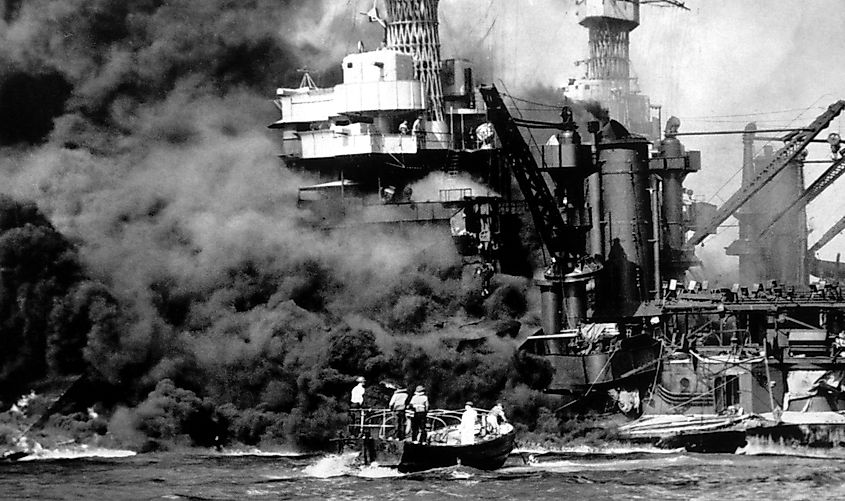
The stories of Pearl Harbor revolve around the chaos of the surprise attack, and the nightmarish conditions that were reported during ship evacuations. Some survivors illustrate how deaths occurred while abandoning ship, as the oils burned on the water’s surface and sailors attempted to swim to safety. Disheartened by the lack of defending fighter aircraft, American forces realized that many of their comrades remained trapped inside the sinking vessels. Helpless sailors, stuck inside sealed chambers of sunken ships, were heard pounding on the steel walls in an attempt to signal for rescue. It took 16 days for these sounds to eventually die out.
Consequences
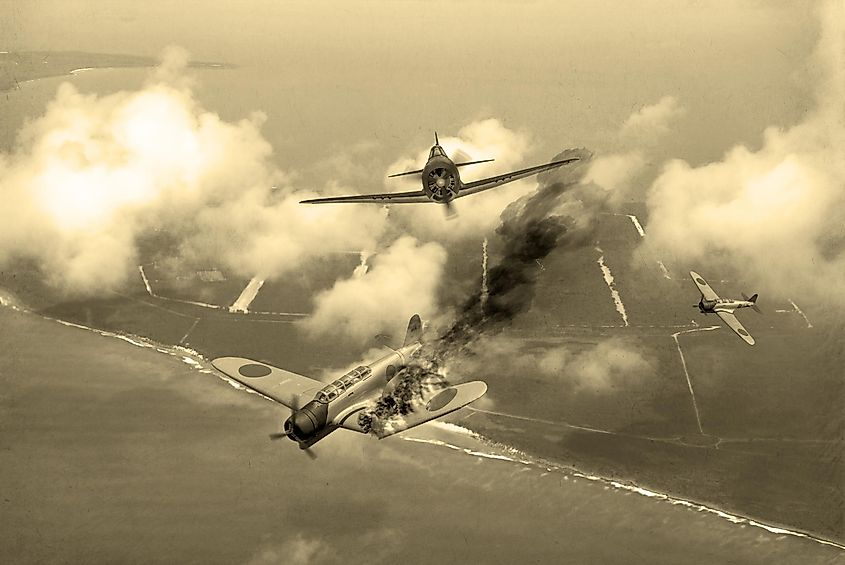
A day later, the United States and Britain declared war on Japan. The public support for American intervention did not falter, despite astronomical losses in the Pacific and European Theatre, and the Allies eventually claimed victory over all Axis powers. In the Pacific theatre, U.S. industry and limitless resources overwhelmed the Japanese forces, who lacked both personnel and equipment. The events of the Pearl Harbor attack were listed as a war crime, due to the absence of a formal warning during ongoing peace negotiations. After President Roosevelt’s “Day of Infamy” speech, a broadcast famous for uniting Americans, advocates for isolationist policies waned.
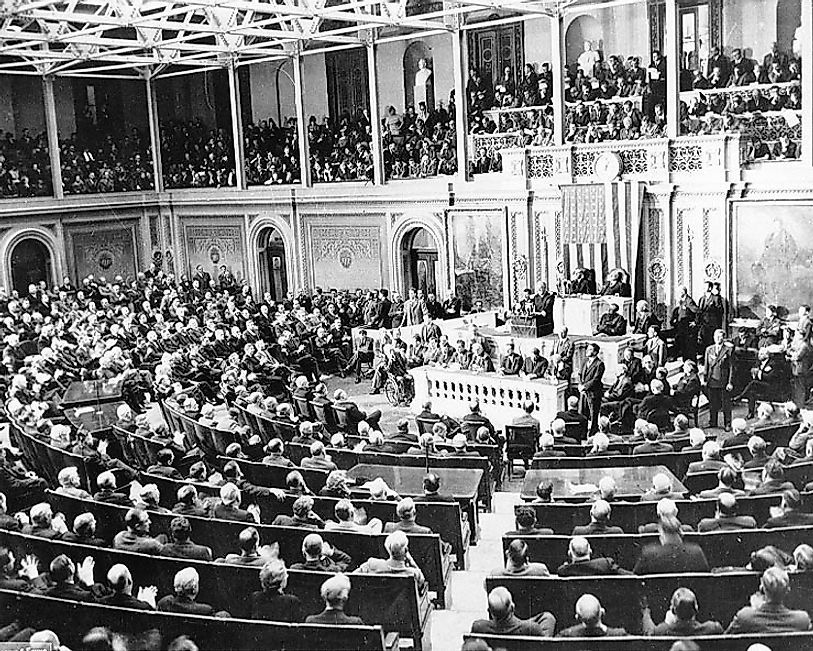
A notable event occurred after the Pearl Harbor attack called the “Niihau Incident.” A stranded Japanese pilot engaged the island citizens of Niihau and incited a violent struggle, with the support of three local Japanese Americans. Their effort failed, but it provoked fear and prejudice in the American public. 10 prison camps were established with the directive of detaining Japanese Americans in an effort to prevent revolts. ~115 thousand Japanese Americans were confined after the President issued an executive order, which is criticized for grossly violating constitutional rights.
World War I revealed to the world that an industrial-scale slaughter of humankind is both possible, and never worth repeating. Regrettably, World War II did not hesitate to resurrect these violent horrors only two decades later. The slaughter of civilians and unprepared sailors in the Pearl Harbor attack ultimately led to the United States dropping nuclear bombs on Japanese cities. Moreover, U.S. isolationism as a foreign policy was abandoned due to the event, raising the question of what history in the past 50 years could have looked like had the Japanese Empire chosen differently. It is ironic that an attempt at a preventative-assault expedited the downfall of that same empire, but the overreach of imperialistic ambitions likely solidified such demise years in advance.











